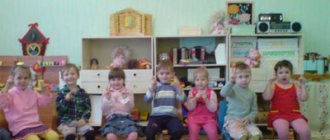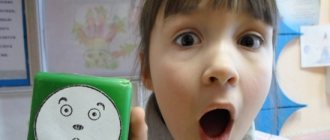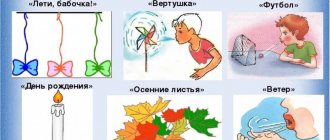Popular
Alalia, aphasia, dysarthria, dysgraphia, dyslalia, dyslexia and other disorders. Violation of the writing process - Dysgraphia. The examination begins with the simplest tasks. The most accessible task for a child is to put words together from a split alphabet. Impaired reading process - Dyslexia To examine the reading status of children, specially composed texts (necessarily in printed letters) are used. Correction of writing and reading impairments To eliminate impairments, a unified system of corrective influence is necessary. This position is confirmed by the fact that dysgraphia and dyslexia are not isolated defects, but most often accompany each other. Speech therapy massage In speech therapy practice, several types of massage can be used. The main thing is a differentiated (strengthening or relaxing) massage, based on the techniques of classical massage. Preparing a child for school - Mathematics What a child should be able to do when entering the 1st grade of school. Preparing a child for school - Reading What a child should be able to do when entering the 1st grade schools. Preparing a child for school - Speech development What a child should be able to do when entering the 1st grade of school. Tips for parents Articulatory gymnastics can be performed daily for 5-10 minutes. Speech therapist for a child The ability to talk and communicate is one of the most important aspects that help a child get comfortable, take your place in the world. Speech therapist for adults The services of a speech therapist for adults are most often required in two cases: after an illness (stroke, pharyngitis, laryngitis) and for speech disorders that were not eliminated in childhood and accompany the patient throughout his life. Speech therapy in MoscowU Many children experience problems with speech at an early age; if you do not look for a solution to this problem, it is possible that defects will also be present in adulthood. Choosing a speech therapist for a child As soon as parents realize that their child needs the help of a speech therapist, the question arises who to turn to, where find a competent specialist who will help your child solve speech problems. Help for your child: speech therapist-defectologist A good speech therapist-defectologist is a specialist “worth his weight in gold.” The problem is that universities, as a rule, graduate speech pathologists with a focus on working in schools. Speech therapist services The development of prerequisites for speech formation begins in the prenatal period. In leading American and European clinics, a speech therapist examines the baby immediately after birth. Child psychologist for children and parents A child psychologist will determine the child’s level of intellectual development (thinking, memory, attention, motor skills...), strengths and weaknesses of the psyche. General speech underdevelopment If alalia or speech delay development could not be overcome in time, i.e. before the age when children begin to be taught to read and write, they are usually called general speech underdevelopment (GSD). Reading in elementary school Literacy and reading lessons in elementary school are a kind of window into the world around us, into the area of human relations.Consultation for parents “Advice from a speech therapist to parents of preschool children”
Who is a speech therapist teacher? A speech therapist is a specialist who corrects speech disorders in children. What does a speech therapist do? First, the speech therapist comprehensively assesses the state of the child’s speech, finds out whether the child pronounces speech sounds correctly for his age, whether he knows a lot of words, whether he constructs phrases correctly, and whether he can communicate well enough through speech. In addition, it evaluates the state of the child’s non-verbal abilities, finds out how developed imaginative thinking is, the ability to navigate in space, the ability to design, draw, think logically and consistently express one’s thoughts.
Then the speech therapist proceeds directly to correctional work, the tasks of which are:
- sound pronunciation correction,
- formation of phonemic processes,
- expansion and enrichment of children's vocabulary,
- development of grammatical structure of speech,
- development of coherent speech,
- preparation for literacy training.
At what age is it time to show a child to a speech therapist? The idea that a child should be brought to see a speech therapist at age five is outdated. By this age, the child’s speech has already been largely formed, since the favorable period for speech development is the age of 2-3 years. It is then that you need to ask if everything is fine with your child’s speech. In the future, you need to consult with a speech therapist annually in order to track the dynamics of the child’s speech formation. After all, what was the norm at 3 years old becomes a lag for 4 years old. If the mother had problems during pregnancy or childbirth, and the child was seen by a neurologist, then you need to pay special attention to the development of speech.
Can parents themselves develop their child’s speech? The physical and mental development of a child begins in early childhood. All skills are acquired in the family, including the skill of correct speech. A child’s speech is formed based on the speech of his family and friends: mother, father, grandmother, grandfather, older sisters and brothers. There is a deeply incorrect opinion that the sound pronunciation side of a child’s speech develops independently, without special influence and help from adults, as if the child himself gradually masters correct sound pronunciation. Non-interference in the process of formation of children's speech almost always entails developmental delays. Speech deficiencies, having become established in childhood, are overcome with great difficulty in subsequent years.
A reasonable family always tries to influence the formation of children's speech, starting from the earliest years of life. Particular attention must be paid to your own speech, because... For children aged 1 to 6 years, parental speech is a role model and the basis for subsequent speech development. It is important to adhere to the following rules:
- You can’t “lisp”, i.e. speak in a babbling language or distort sound pronunciation, imitating the speech of a child,
- it is desirable that your speech is always clear, smooth and emotionally expressive,
- When communicating with a child, do not overload your speech with difficult-to-pronounce words, incomprehensible expressions and phrases,
- You should ask only specific questions, do not rush to answer,
- The child should not be punished for mistakes in speech, mimicked or corrected irritably.
Advice from a speech therapist.
1. Very often children who speak poorly for their age also eat poorly. As a rule, it’s a real problem for them to eat an apple or a carrot, not to mention meat. This is caused by weakness of the jaw muscles, which in turn delays the development of movements of the articulatory apparatus. Therefore, be sure to force your child to chew crackers, whole vegetables and fruits, bread with crusts and chunks of meat. To develop the muscles of the cheeks and tongue, show your child how to rinse his mouth. Teach to puff out your cheeks and hold the air, “roll” it from one cheek to the other.
2. Read to your child every day. Don’t show your annoyance or reluctance if your child asks you to read a book he especially loved for the hundredth time. If you are very busy, you can put on a cassette or disk, but remember that personal communication is most valuable.
3. Talk to your child more often, patiently answer all his questions, encourage the desire to ask them. Speak clearly and distinctly, repeating a word or phrase several times.
4. Don’t forget to develop fine motor skills - i.e. The baby should work as much as possible with his naughty fingers. Scientists have proven that the development of fine motor skills of the hands is directly related to the development of speech. No matter how tedious it may seem to you, let the baby button his own buttons, lace his shoes, and roll up his sleeves. Moreover, it is better for the child to start training not on his own clothes, but first to “help” the dolls and even the parents get dressed. As the child's fingers become more agile, his speech will become more and more understandable not only to his mother. It is also very useful for kids to practice modeling from plasticine and cutting out paper. An adult should be nearby and voice the entire process.
5. The source of the formation of speech sounds is an air stream. Correct speech breathing ensures normal sound production, creates conditions for maintaining normal speech volume, strictly observing pauses, maintaining fluency of speech and intonation expressiveness. Speech breathing disorders can be a consequence of general weakness, adenoid growths, as well as cardiovascular diseases.
6. Wean your child off the pacifier as early as possible. Do not force your child to sleep with his hands under his cheeks - this can deform the jaw. Never compare your child with other children.
7. Games for activities with children at home:
- Expanding children's active vocabulary with the help of subject pictures. "What is this?" Goal: to teach children to establish the similarity of an object with its image. Expand the active dictionary. Aids: object pictures: doll, car, ball, dog. Progress of the game: the parent shows the child a picture, names it and places it in front of him. Then, pointing to one of them, the adult asks: “Nina, what is this?” If the child cannot name it, the parent speaks himself and asks him to repeat after him: “say: this is a doll.”
- Expanding children's active vocabulary with the help of story pictures. "The girl is eating." Goal: to teach children to see the plot of the picture, i.e. recognize familiar characters and the actions they perform. Form a speech consisting of simple common sentences, learn to answer questions based on the contents of pictures not in monosyllables, but in a complete, detailed manner. Benefits: story picture. Progress of the game: Parent: Who is sitting at the table? Child: The girl is sitting. Parent: What is the girl doing? Child: The girl is eating. Parent: What does the girl eat? Child: The girl is eating soup. Parent: What do you eat soup with? Child: Eats soup with a spoon.
- Development of sensory perception. "The object and its image." Purpose: to give an idea of the variety of geometric shapes. Enter and fix in the active dictionary the names of some volumetric geometric shapes. To form a concept of the similarities and differences of objects in shape. Continue to develop phrasal speech in the child, consisting of simple sentences. Equipment: cube, ball, triangular prism, board with the image of these figures. Progress of the game: the parent places all the figures and the board on the table. Then he takes a cube from the table and asks the child: “What is this?” He answers: “Cube.” An adult, pointing to the board, asks: “Where is the cube?” “Here is a cube,” the child points to a picture of a cube. “Now we’ll put the cube on the board where the cube is also drawn,” says the adult. After this, he invites the child to arrange the remaining figures.
- The concept of size. “Let’s take the bears for a ride in cars.” Goal: to consolidate the concepts of “big and small” in children’s active vocabulary. Improve visual perception of the size of an object. Continue the formation of phrasal speech. Equipment: 2 bears of different sizes and 2 cars corresponding to them. Progress of the game: an adult places 2 cars in front of the child. He asks: “What kind of car is this, and this one?” The kid answers similar questions, showing two bears. Then he offers to ride first the big bear, then the little one. Accompanying the child’s actions with the words: “The big bear rides in a big car, and the little one rides in a small one. Repeat!"
- Concept of color. "Build a pyramid." Goal: to consolidate the names of primary colors in active speech. Select the named color from 2-3 others; independently determine the color according to the instructions of the speech therapist. Continue working on the formation of phrasal speech. Equipment: pyramids of 3 colors (red, yellow, green) of three rings each. Progress of the game: there are pyramids on the table. The parent points to the pyramid and asks: “What color?” The child shows. The adult offers to take off the rings and put them on the table. Then he asks the child to assemble the pyramids one by one, putting on rings not only by color, but also by size.
- Development of articulatory motor skills and speech breathing. "The bird is singing." Goal: to teach children to stretch their lips in a “smile”. Equipment: groovy voiced bird. Progress of the game: the parent shows the bird, says: “Look what a bird.” He starts it up and puts it on the table: “The bird is singing - pi-i, pi-i, pi-i.” The parent draws the child’s attention to the fact that the lips are stretched to the sides. “How does the bird sing?” The child repeats. You need to play this game in front of a large mirror.
- Relaxation games. The main role of relaxation games is to activate and concentrate the child’s attention when performing various tasks. Relaxation play is an integral part of any activity where there is a need to change one type of activity to another. The duration of the relaxation game is up to 2 minutes. Its nature and method of implementation depend on the level of psycho-speech development of the child. “How does a bunny jump?” . Goal: to promote attention. Teach children to perform movements not only by imitation, but also by instructions. Develop visual and auditory perception. Improve your child's motor skills. Progress of the game: the parent asks: “How does the bunny jump?” The child bends his elbows, presses his fists to his chest and begins to jump on two legs. Jumps are accompanied by the words: “Jump-jump, jump-jump.” During the game, the adult monitors the child’s movements. “Put your hands up and wave them.” Goal: to promote attention. Develop visual and auditory perception. Improve your child's motor skills. Equipment: card with the text: Hands up, let's wave them. Handles to the sides - like this. Handles down. They stomped their feet - like that. The legs began to walk and ran along the path. Progress of the lesson: the speech therapist invites the children to get up from the table and play with him.
Advisory and educational work with parents of children with speech impairments in a preschool educational institution.
Authors: A.V. Kasyanova, teacher-speech therapist, MBDOU "Kindergarten No. 247", Novokuznetsk, Kemerovo region
N.N. Vasilyeva, teacher-speech therapist MBDOU "Kindergarten No. 247", Novokuznetsk, Kemerovo region
Photos: Depositphotos
Tags: A.V. Kasyanova N.N. Vasilyeva Speech development
Correctional educational process
Early child support The problem of a person-oriented approach to the diagnosis and correction of speech is especially relevant in working with young children, because every year the number of practically non-speaking children does not decrease, but increases. Peculiarities of correction of the phonetic aspect of speech Every hour we hear incorrect speech to one degree or another . Even television announcers, unfortunately, have a lot of defects in pronunciation: whistling, hissing, guttural or single-stroke sigmatisms. Softening defect, violation of sound pronunciation Have you ever met children who soften their consonants in a conversation? There is a feeling that something is preventing them from speaking. They “lisp” like one-and-a-half-year-old babies. Prevention of acoustic dysgraphia, deafening defect Among sound pronunciation disorders in preschoolers, there is often a deafening (voicing) defect, which is extremely unpleasant due to its “tenacity.” Even after his correction in oral speech, he lingers in written speech.General tips for practicing at home.
It is important that homework is not like lessons, but like a game. Come up with different stories to captivate your child. If you conduct classes in the form of games, your child will be more willing to learn to speak correctly, which will certainly help achieve great results in a short time.
Under no circumstances should you be angry if something doesn’t work out for your child! Correcting pronunciation is not easy; you cannot teach your child to pronounce all sounds clearly and clearly in one lesson, as well as to use complex words. In any activity, time plays an important role. Mistakes are an integral part of the learning process.
Be patient, praise your child even for the smallest successes, support him if something doesn’t work out. If you break down and scold your baby, then he will not speak better, but will only withdraw into himself, which can aggravate speech problems.
Classes must be regular. It is better to exercise 5 minutes a day than once a week for 1.5 hours. At the very beginning, you can start exercising with 3-5 minutes a day, gradually increasing them to 15-20 minutes twice a day.
Modern approaches to the study, training and education of children with developmental problems
Ways to enhance communication in children with general speech underdevelopment (GSD) The role of communication for the development of a child’s speech and personality cannot be overestimated. Speech as a means of communication arises and develops in the process of communication. On the problem of learning the semantic side of a word by children with level III SEN. The formation of a child’s vocabulary is closely related to the development of his cognitive activity. Mastering a word reflects, first of all, the process of the relationship between thinking and speech in the child’s mind. On the issue of the specifics of understanding nonverbal means of communication by children with disabilities, psychologists and psycholinguists have convincingly proven that nonverbal means play a huge role both in communication and in the processes of speech production and speech perception. Peculiarities of communication culture in preschool children with general speech underdevelopment In the process of socialization, a person masters language, behavior patterns, norms and rules of communication, and learns cultural ideals.Tips for working with alalia
Parents of an alalik child must attend not only speech therapy classes, but also a defectologist. They definitely need to consult a neurologist, who will prescribe the necessary medications to stimulate the functioning of the speech centers. Many parents console themselves with examples of children who speak late without any help. But such children have a large delay in speech development: sound pronunciation and syllable structure are distorted, speech is incomprehensible to others, etc.
If at three years old your child does not speak or communicates only in simple phrases, do not hesitate to make an appointment with a speech therapist. Parents alone will not be able to bring their child’s speech development closer to normal. Such children are often offered a specialized kindergarten, and if the form of alalia is particularly complex, then even home schooling.
Such children need to be trained every day, the duration of classes depends on age. Physiotherapeutic procedures are mandatory for them; swimming lessons will be useful. Alaliki often refuse to speak because they are accustomed to the fact that their loved ones understand them without words. Some children do not want to communicate because it is a difficult activity for them.
Therefore, the main task of parents of such children is to encourage them to communicate.
This does not mean that you need to ask your baby to speak complex words right away. It is important to achieve any vocal reaction in the initial stages. Gradually increase your requirements for speech quality. Encourage your child even for small achievements.
Constantly comment on your actions. The purpose of this is not for the child to repeat everything after you - in this way, you expand and clarify his vocabulary. Play more role-playing games with him - this way you will carry out corrective work on the baby’s behavior.
Children with alalia are characterized by increased fatigue, are often capricious, and have no desire to do everything on their own. Parents need to develop in them the necessary self-service skills that will simplify the process of socialization of the child. Alalia is a complex speech pathology, so special learning conditions are created for such children. Parents need to be patient, because you will not get quick results. But if correctional work was started early, and parents follow all the recommendations of specialists, then you will be able to correct the defect as much as possible and integrate the baby into a normal speech environment.






